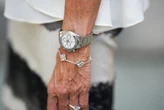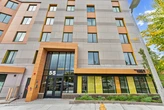Here are two high-level truths essential to understanding the present and future of robotics. First, we want robots to work for us. Second, when it comes to work, humans have three historical blueprints for recruiting labor: animals, through the process of domestication; other humans, through employment, but also subjugation and outright enslavement; and machines, through the development of physical systems for performing actions.
Why does this matter to understanding the present and future of robotics? While we’ve created an astonishing diversity of machines in the broadest sense, those first two blueprints for recruited labor—animals and other humans—have so far dominated our conception of robots. Today our most celebrated robots, all of them marvels of design and engineering, are machine evolutions of animals and other humans. You can see the echoes of those same dogs and draft animals we recruited as labor thousands of years ago in this dog and this dog, another dog, and this mule. And you can see our adoration of humanoid robots in Agility Robotics’ Digit, Boston Dynamics’ Atlas, Tesla’s Optimus, and Unitree’s G1.There are straightforward reasons for this. First, as a species we’ve done a lot of work designing the world for us and our animal helpers, so it makes sense to design robots resembling ourselves and those animals for work in those spaces. As an example, this humanoid robot from Under Control Robotics is designed to work alongside humans in human workplaces such as warehouses and construction sites, a machine enhancement of human-like capabilities. Second, we have an innate tendency in our psychology toward anthropomorphism. Our brains are hardwired through evolutionary adaptation to discern complex social signals. A major reverberation of this adaptation is that we tend to anthropomorphize the stuff around us, affixing human characteristics to non-human things. It’s why we have trains with faces in Thomas & Friends and why Star Wars’ C-3PO—a machine—is anxious and chatty. It’s also why many people name their cars and Roomba vacuum cleaners.
The pivot
Here’s the pivot ahead, though: there are important spaces in our future that aren’t designed for us. Anthropomorphized animal- and human-like robots are designed to replicate human and animal capabilities, but those capabilities are based on physiologies that don’t have the same advantages for work in outer space, in oceans, on the blades of wind turbines, or inside volcanoes. While nature certainly has many highly specialized adaptations, the physiologies of humans and animals are simply not made for maneuvering inside gas and water pipes; they can’t be dropped from aircraft without parachutes or thrown into battlefields; they aren’t well-suited for fighting lithium battery fires inside a landfill. Humanoid and animal-inspired robots also tend to be complex, power-hungry, and expensive—unhelpful traits for the scale of work we’ll need them to do. For these kinds of work, our future needs weird robots. This means radically self-reliant robots with unconventional form factors designed to work in extreme environments.Here are three speculative, weird robots we’ll need in the near future.Space BallMultiple companies are currently building low-Earth orbit space stations that will continue human presence in space beyond the International Space Station’s planned decommissioning in 2030. A big promise of these commercial endeavors is the opportunity to conduct science experiments in space for industries developing advanced materials, medicine, and other technologies. Tending to these experiments where there’s no air or atmosphere will require robotic form factors capable of maneuvering in zero gravity and operating in temperatures that fluctuate between negative 85° Fahrenheit and 257° Fahrenheit. What might that look like? A spherical robot, applying electrostatic forces to affix itself to surfaces, with a dexterous array of pivoting grippers, sensors, and cameras that emerge when it’s not rolling from one spot to another.Here on earth, this same kind of robot might someday help search and rescue teams conduct reconnaissance by rolling across steep and rugged terrain in any kind of weather and at night—conditions in which it’s not safe for human and canine teams to work. Seabed SeederSeagrass meadows, which are highly effective “blue carbon” sinks, also play outsized roles in protecting coastlines from storm surges, improving water quality, and nurturing commercial fish stocks. Those roles will only grow in importance as we work to mitigate the effects of climate change. Globally, we’ve already lost nearly 30% of seagrass meadows and we’re currently losing about 7% each year. Reversing that through restoration will require planting roughly two football fields of seagrass every hour. Planting native seagrass, while also removing invasive seagrass species, will require robots capable of working across underwater terrain in dynamic currents for long periods of time. What might that look like? An aquatic planter with independently sensing legs, topped with a helix-like underwater turbine to self-generate power from the currents. This same kind of robot might eventually patrol urban waterways, removing trash and plastic waste before it can reach our oceans. Bridge BlobThere are more than 600,000 bridges in the United States and approximately a third of them are designated “structurally deficient” as of 2024. Those bridges are crossed by 168.5 million motorists every day. At the present rate of repair, it’ll take more than 50 years to fix these bridges, so we’re going to need a lot of help. While the bulk of research into particle-armored liquid robots is focused on biomedical applications, their unique properties—capable of navigating tiny fissures in concrete and other materials, enduring harsh conditions, and yet deformable—means they could eventually be used with bridges to inspect, apply coatings, and remove contaminants. What might that look like? Thousands of tiny armored blobs working mostly unseen to help bridges and other big infrastructure self-heal.Farther into the future, this same kind of robot might continuously clean your home’s roof, windows, and siding, working year-round to remove moss, algae, and dirt—no ladders required.








No comments